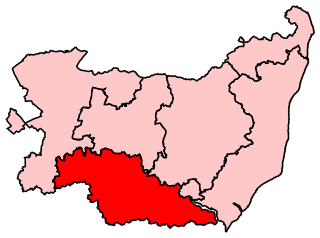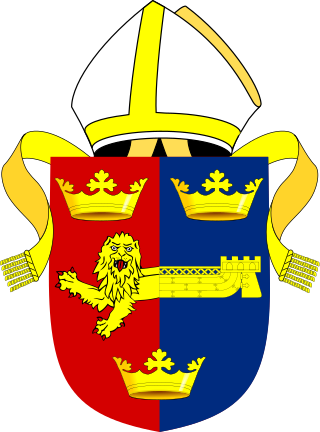
Thomas Seckford or Thomas Sakford Esquire was a senior lawyer, a "man of business" at the court of Queen Elizabeth I, a landowner of the armigerous Suffolk gentry, Member of Parliament, and public benefactor of the town of Woodbridge. He was one of the Masters in Ordinary of the Court of Requests to Queen Elizabeth, 1569-1587, and was Surveyor of the Court of Wards and Liveries 1581-1587. He built mansions in Woodbridge, Ipswich and Clerkenwell, and was at different times Steward of the Liberty of Ely in Suffolk, Bailiff for the Crown of the former possessions of Clerkenwell Priory in the City of London and County of Middlesex, and deputy Steward for the northern parts of the Duchy of Lancaster. He was the patron of Christopher Saxton in the making of the first surveyed County Atlas of England and Wales.


Nicholas de Crioll, of a family seated in Kent, was Constable of Dover Castle and Keeper of the Coast during the early 1260s. His kinsman Bertram de Criol had distinguished himself in these offices during the preceding 20 years and both were near predecessors of the eminent Warden of the Cinque Ports, Stephen de Pencester.

South Suffolk is a constituency represented in the House of Commons of the UK Parliament since 2015 by James Cartlidge, a Conservative.

The Diocese of St Edmundsbury and Ipswich is a Church of England diocese based in Ipswich, covering Suffolk. The cathedral is St Edmundsbury Cathedral, and the bishop is the Bishop of St Edmundsbury and Ipswich. It is part of the Province of Canterbury.

Foxearth is a village and civil parish on the borders of north Essex and Suffolk in England, between Long Melford and Cavendish. The neighbouring parishes are Borley, Belchamp Walter, Belchamp Otten, Liston and Pentlow.
Bumpstead was a rural district in the administrative county of Essex, England from 1894 to 1934.

Diss railway station is on the Great Eastern Main Line in the East of England, serving the town of Diss, Norfolk. It is 94 miles 43 chains (152.1 km) down the line from London Liverpool Street and is situated between Stowmarket to the south and Norwich to the north. It is approximately 20 miles (32 km) south of Norwich. Its three-letter station code is DIS.
The Long Melford–Bury St Edmunds branch line was a railway between Long Melford on the Stour Valley Railway and Bury St Edmunds on the Ipswich to Ely Line. The line opened on 9 August 1865 and closed to passengers on 10 April 1961 and freight on 19 April 1965.
Campsey Priory,, was a religious house of Augustinian canonesses at Campsea Ashe, Suffolk, about 1.5 miles (2.5 km) south east of Wickham Market. It was founded shortly before 1195 on behalf of two of his sisters by Theobald de Valoines, who, with his wife Avice, had previously founded Hickling Priory in Norfolk for male canons in 1185. Both houses were suppressed in 1536.

Sir Nathaniel Barnardiston of Kedington, alias Ketton, Suffolk was an English landowner, magistrate and senior representative of a long-established knightly family, one of the wealthiest in Suffolk, who sat in the House of Commons for Sudbury twice and for the Shire three times between 1625 and 1648.

Henry Oliver Charles FitzRoy, 12th Duke of Grafton, known as Harry Grafton, is an English peer and music promoter. He inherited the Dukedom of Grafton from his grandfather, Hugh FitzRoy, 11th Duke of Grafton, on 7 April 2011. He is also a direct male-line descendant of Charles II of England.
Benjamin Plim Bellamy (1782–1847) was an English actor.
Sir John Gage was a major landowner and grandfather of the Tudor courtier Sir John Gage KG.
The Barnardistons were English landholders of the medieval period, with holdings in Barnardiston, Suffolk and Great Coates, Lincolnshire.
John Hopton was an English landowner and administrator with estates in Suffolk and Yorkshire who was active in local government during the reigns of King Henry VI and King Edward IV.

Sir Thomas de Felton was an English landowner, military knight, envoy and administrator. He fought at the Battle of Crécy in 1346, and the Capture of Calais in 1347. He was also at the Battle of Poitiers in 1356. A recurrent figure in the Chronicles of Jean Froissart, he was a signatory to the Treaty of Brétigny in 1360. In 1362 he was appointed Seneschal of Aquitaine. He accompanied Edward the Black Prince on his Spanish campaign. He was taken prisoner by Henry of Trastámara's forces in 1367. In 1372 he was appointed joint-governor of Aquitaine and seneschal of Bordeaux. He caused Guillaume de Pommiers and his secretary to be beheaded for treason in 1377. He was invested a Knight of the Garter in 1381.

Ipswich Greyfriars was a mediaeval monastic house of Friars Minor (Franciscans) founded during the 13th century in Ipswich, Suffolk. It was said conventionally to have been founded by Sir Robert Tibetot of Nettlestead, Suffolk, but the foundation is accepted to be set back before 1236. This makes it the earliest house of mendicant friars in Suffolk, and established no more than ten years after the death of St Francis himself. It was within the Cambridge Custody. It remained active until dissolved in the late 1530s.
Sir John de Verdon was the 2nd son and eventual heir of Sir Thomas de Verdon, Lord of Brixworth in Northamptonshire and Bressingham in Norfolk, and his wife Margaret, daughter of Bewes otherwise Bogo de Knovill, 1st Baron Knovill. His main residence was initially at Bressingham, then later at Martlesham in Suffolk. In 1324, he was returned as a knight to attend the Great Council at Westminster. He is cited as being on the King's service in Aquitaine in June 1324. He was summoned to Parliament as a Baron by Writ 1331/1332, 1335/1336 and to the Great Councils in 1342 and 1347. In 1346, during the Crecy campaign, he served in the 1st Division under Prince of Wales 'the Black Prince', who gave him a destrier called Grisel de Coloign. However, illness necessitated his return to England sometime before 12 January 1346/7. In 1369 he attended Parliament as a Knight of Northamptonshire, although he had been created a Baron before then. He married firstly Agnes, and secondly Maud, the widow of Ralph de Crophull of Bonnington, Nottinghamshire, whose son Sir John de Crophull married Margery, daughter of Sir John de Verdon's kinsman, Theobald de Verdun, 2nd Baron Verdun of Alton Castle.

The Suffolk Guild of Ringers for the Diocese of St Edmundsbury and Ipswich is a society and charity supporting the bell ringers and rings of bells in the Diocese of St Edmundsbury and Ipswich who practice the art of change ringing. The Guild was established on 2 April 1923 at Ipswich and covers over 200 rings of bells in the county of Suffolk in the area that falls within the diocese boundary.












